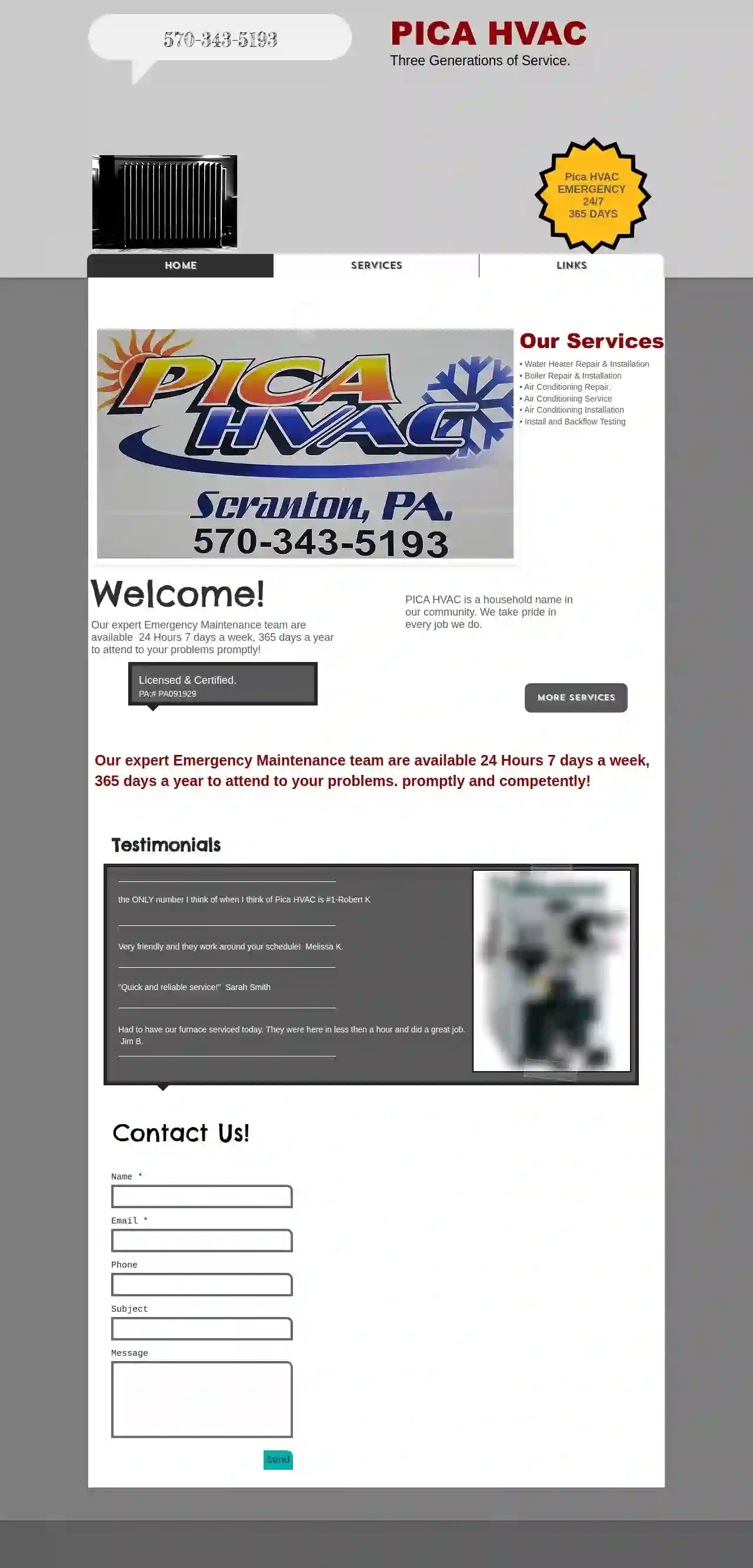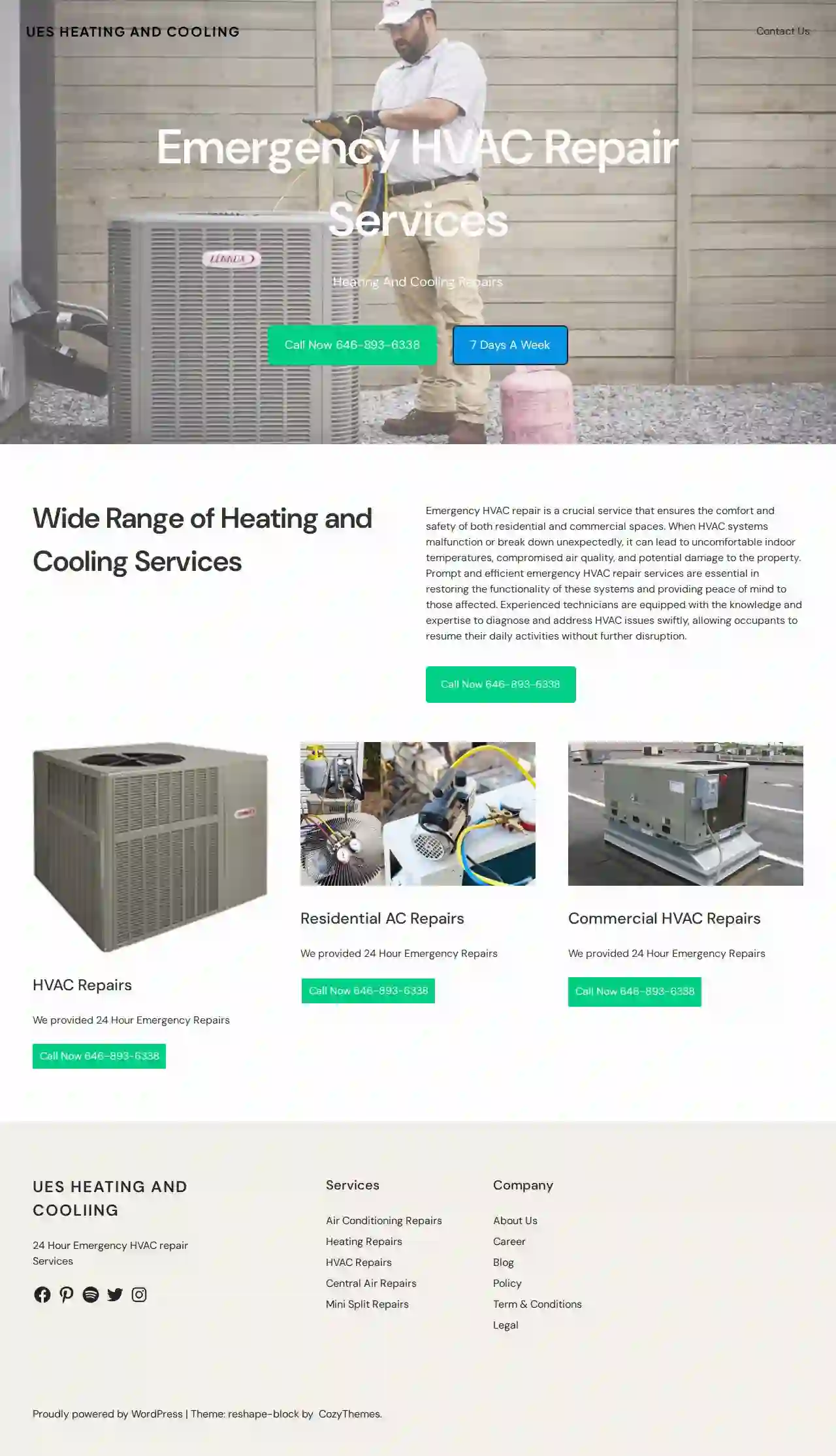Boiler Installation Wilkinsburg
Best Boiler Installation in Wilkinsburg
Receive multiple Boiler Installation quotes for your project today! Compare profiles, reviews, accreditations, portfolio, etc... and choose the best offer.

PTAC REPAIR NYC INC
3.911 reviews238 E 75th Street, 3rd Floor, New York, 10021, USPTAC REPAIR NYC INC. specializes in PTAC repair in NYC done with a quick turnaround time. Trust us with your next PTAC unit repair in NYC. Call us today! 24/7 emergency services. With over 40 years of combined experience, we understand the importance of your home's air conditioning and heating systems. At PTAC REPAIR NYC INC., our team of experts is here to provide comprehensive service regarding all of your heating and air conditioning needs in Five Boroughs, NYC, Queens, Brooklyn, Manhattan, Bronx, Staten Island, Long Island, Suffolk County, Nassau County.
- Services
- Why Us?
- Gallery
Get Quote
New Cool Air
4.58 reviews509 E 78 St. 1B, Manhattan, 10075, USNew Coolair is a premier Air Conditioning services company in New York City. We provide expert AC repair, installation, and maintenance service at your doorstep for both residential and commercial Air conditioning needs. We make sure that you have access to the highest-quality summer cooling with our expert Air Conditioning services. We offer a complete range of AC services like AC installation, AC cleaning, bracket installation, ac maintenance, air duct cleaning, steam cleaning, AC winterization, etc.We have years of experience in Air Conditioning business and our experts and technicians are capable of taking care of all your air-conditioning systems to provide maximum energy efficiency and superior indoor air quality. We work with a team of trained and qualified professionals and continue to educate ourselves to offer the best services. We take care of all the safety measures for a safe and clean working environment. We are certified and insured to do our job in NYC and its nearby regions. We use most advanced technologies, tools, techniques, and follow Green Energy Policies to deliver superior quality services as per your requirements.We are committed to build trust and goodwill among our customers by setting high standards in the market for Air Conditioning Services. Our AC services are well-recognized in the state and customers proudly recommend us for all kinds of air conditioning solutions. Coolair-nyc is also a leading supplier of air conditioner parts and accessories like window units, PTAC units, thru-the-wall units, heating coils, and water storage heat pumps. If you notice any kind of disturbance, noise, or breakdown in your air-conditioning system, you can call us anytime.
- Services
- Why Us?
- Accreditations
- Gallery
Get Quote
UGI Heating, Cooling & Plumbing
4.5199 reviews715 Front Street, Whitehall, 18052, USUGI Heating, Cooling & Plumbing is dedicated to providing quality HVAC and plumbing services in Eastern Pennsylvania. We understand that your home's heating, cooling, and plumbing systems are crucial for your comfort and well-being. That's why we offer a wide range of services, from routine maintenance to emergency repairs, to keep your systems running smoothly for years to come. Our team of veteran installers and technicians is committed to providing superior customer service and ensuring your complete satisfaction. We take the time to understand your unique comfort preferences and work with you to find the best solutions for your needs.
- Services
- Why Us?
- Gallery
Get Quote
Energy Design Systems, LLC - HVAC Load Calculation Software, Home Energy Audits
4.753 reviewsPhiladelphia, USEDS is a software company that provides innovative solutions for the HVAC industry. Our products include the HVAC Load Calculator, HVAC Home Auditor, and Lead Generation Tool. With EDS, you can streamline your workflow, close more sales, and provide exceptional service to your customers. Our software is designed to be easy to use, secure, and reliable, with 24/7 support available. We also offer bulk discounts and free software updates and upgrades. Whether you're a small business or a large corporation, EDS has the tools you need to succeed in the HVAC industry.
- Services
- Why Us?
- Gallery
Get Quote
PICA HVAC
4.769 reviewsScranton, US- Services
- Why Us?
- Gallery
Get Quote
1st Choice Heating & Cooling
4.9766 reviewsS30W24698 Sunset Drive, Waukesha, 53189, USAt 1st Choice Heating & Cooling, our top priority is doing the right thing – always. We value customer service and strive to build strong relationships with our customers based on trust. We believe in educating our customers about their air conditioners and HVAC systems, empowering them to make informed decisions and feel confident in their choices. We are dedicated to providing a customer-centric approach, ensuring every interaction reflects our commitment to exceptional service. We build trust through quality HVAC solutions and lasting relationships founded on honesty and integrity. We empower our customers by providing them with the knowledge they need to understand their HVAC systems, enabling them to make smart choices with confidence and peace of mind.
- Services
- Why Us?
- Gallery
Get Quote
UES Heating and Cooling Services
3.76 reviewsYork, USUES Heating and Cooling is your trusted partner for all your heating and cooling needs. We provide a wide range of services, including emergency HVAC repair, residential and commercial HVAC repairs, and routine maintenance. Our team of experienced technicians is dedicated to providing prompt, reliable, and affordable service to keep your home or business comfortable year-round. We understand that HVAC problems can be stressful, which is why we offer 24/7 emergency service. Our technicians are available around the clock to diagnose and repair any issue, no matter how big or small. We also offer a variety of financing options to make our services affordable for everyone. At UES Heating and Cooling, we are committed to providing our customers with the highest quality service. We use only the latest technology and equipment to ensure that your system is repaired correctly the first time. We are also fully licensed and insured, so you can be confident that you are in good hands. Contact us today to schedule a service appointment or learn more about our services.
- Services
- Why Us?
- Gallery
Get Quote
Family Heating & Air Conditioning
571 reviewsElkins Park, PA, 873 Township Line Road, 19027, USFamily Heating and Air Conditioning is a trusted provider of heating and cooling services in the Philadelphia area. With over 15 years of experience, our team of experts is dedicated to providing top-notch service and solutions to our customers. We offer a range of services, including repair, replacement, and maintenance, as well as financing options to fit your budget. Our goal is to provide you with the best possible comfort and peace of mind, and we're committed to delivering exceptional results every time.
- Services
- Why Us?
- Accreditations
- Our Team
- Testimonials
- Gallery
Get Quote
NYC PIGEON AIR CONDITIONER
4.9365 reviews33-61 61st St, Queens, 11377, USNYC PIGEON AIR CONDITIONER CALL OR TEXT 347 719 1499 NYC PIGEON AIR CONDITIONER CALL OR TEXT 347 719 1499 NYC PIGEON AIR CONDITIONER CALL OR TEXT 347 719 1499 NYC PIGEON AIR CONDITIONER CALL OR TEXT 347 719 1499 Window Air Conditioner Installation Mini Split Ac Installation 347 719 1499Window Air Conditioner Installation Mini Split Ac Installation 347 719 1499Window Air Conditioner Installation Mini Split Ac Installation 347 719 1499Window Air Conditioner Installation Mini Split Ac Installation 347 719 1499Window Air Conditioner Installation Mini Split Ac Installation 347 719 1499Window Air Conditioner Installation Mini Split Ac Installation 347 719 1499 We are here to help! We strive to be in constant communication with our customers until the job is done. If you have questions or special requests, just drop us a line. To get a free quote, or for emergency service, please contact us at your convenience. We look forward to serving you!We are located at 33-61 61st St, Queens, NY 11377We do not accept visits to our office. If you need assistance, please contact us and we will visit your location. NYC PIGEON AIR CONDITIONER 347 719 1499HoursMonday - Friday: 10am - 9pmSaturday - Sunday: 8am - 11am
- Services
- Why Us?
- Gallery
Get Quote
Frasier's Plumbing, Heating, & Cooling
4.8310 N. Brown Street, Rhinelander, USWith over 100 years of industry experience, Frasier's Plumbing, Heating, Cooling, and Electrical is committed to delivering unmatched plumbing, drain cleaning, HVAC, and electrical services. Our highly skilled and extensively trained team is made of friendly professionals prepared to handle any repair, replacement, or maintenance needed to ensure the comfort of your home. Whether you’re facing an overflowing toilet or an air conditioner that’s not keeping up with the heat, we have the right services. That makes Frasier’s a home comfort company Where Everyone’s a Neighbor.
- Services
- Why Us?
- Accreditations
- Gallery
Get Quote
Over 15,611+ HVAC Businesses in our network
Our HVAC experts operate in Wilkinsburg & surroundings!
HVACCompaniesHub has curated and vetted the Best HVAC Companies near Wilkinsburg. Find a trustworthy business today.
Frequently Asked Questions About Boiler Installation
- Experience and Qualifications: Check that the company is licensed, bonded, and insured. Ask about their experience installing similar boiler systems.
- References and Reviews: See what others are saying about the company's work and customer service.
- Detailed Quotes: Get written, itemized quotes from multiple installers to compare costs and services.. Check for transparency and comprehensiveness in their estimates.
- Warranty: Inquire about warranties on both the boiler itself (from the manufacturer) and the installation (from the installer)..
- Insurance: Check that the installer has insurance coverage for any incidents during the installation.
- Payment Terms: Discuss payment options and financing, if needed.
Can I install a boiler myself?
How long does it take to install a boiler?
How do I choose a boiler installer?
How do I turn off my boiler?
Can I install a boiler myself?
How long does it take to install a boiler?
How do I choose a boiler installer?
- Experience and Qualifications: Check that the company is licensed, bonded, and insured. Ask about their experience installing similar boiler systems.
- References and Reviews: Ask for references and check online reviews to assess the installer's reputation.
- Detailed Quotes: Get written, itemized quotes from at least three contractors. Ensure the quote includes everything, such as the cost of the boiler, labor, parts, removal of the old boiler, and any necessary modifications to your plumbing or electrical systems.
- Warranty: Inquire about warranties on both parts and labor.
- Insurance: Check that the installer has insurance coverage for any incidents during the installation.
- Payment Terms: Discuss payment options and financing, if needed.